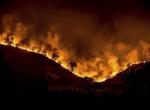India and China had signed a bilateral agreement on September 18 this year providing for conducting the Kailash Mansarovar Yatra through Nathu La in Sikkim Himalayas in addition to the existing Lipulekh Pass in Uttarakhand. Addressing the media after the signing of the MoU in this regard, Prime Minister Narendra Modi said the new route offers many benefits. “It makes Kailash Mansarovar accessible by a motorable road, which is especially beneficial for older pilgrims. It offers a safer alternative in the rainy season, makes the pilgrimage shorter in duration and will enable a much higher number of pilgrims to go there,” he said.
However, the bad news is that whereas China may be able to do its bit to take necessary steps to ensure the safety of the route before it opens, unprepared India may still be fighting with the systemic inertia to remove vulnerabilities for ensuring a hiccup free, smooth passage to the pilgrims, tourists and traders on its side of the border.
Of course, this bad news is somewhat obscured by another good news that by now we not only know the weak links in our chain of operation and what ails our disaster management systems, but additionally, we have also been repeatedly taught the do’s and don’ts of life by none other than the disasters themselves. Every now and then, we have passed through the tides of pain and suffering which are now so intense as to drive us to action. Nathu La, through which pilgrims will be able to reach Mansarovar next year, literally means a Pass with ears that listen. We too need listening ears without which the cries of those affected will continue to haunt us! It is therefore time to act.
Ordinarily hard core pilgrims are neither deterred by dangers that they might face when it comes to pilgrimage, nor do they fear the horror stories of disaster-inflicted death, destruction and sufferings, told to them by the previous generation. This is because they value faith, devotion, penance and salvation more than they fear death. It is the duty of the government, however, to protect the pilgrims from dangers of all shades and colors. According to a report in the News from China, September 2014 Issue, a total of nearly 70,000 Indian citizens have travelled to Tibet for pilgrimage in the past decade. The number of pilgrims has shot up from a mere 400 in 2003 to 14,084 in 2013, a whopping 35 fold increase!
Nathu La is already attracting tourists because of its fascinating altitude of 4310m, Tsomgo Lake, Baba Mandir and the fun of a handshake with the Chinese at the border fence. Once the route is opened for pilgrimage, the elderly and the sick will also not like to be left behind regardless of high altitude problems and dangers of which they may or may not be aware at this time. They will need acclimatisation, medicare and all kinds of support even in the normal times. In the event of border skirmishes and natural calamities, they will need much more than the so called preparedness. Even then a great majority of pilgrims may not get deterred by anticipated dangers, no matter how serious, because afterall, Nathu La had already been on the old Silk Road for trade between India and China, and it, even now continues to be one of the three open trading borders.1 Moreover, if Jawaharlal Nehru and Indira Gandhi could reach Bhutan via Nathu La more than half a century ago, then why not the pilgrims now? The Nathu La route may have remained closed for over four decades after the Sino-Indian war of 1962 but India’s armed forces have always been there and trade through Nathu La has already resumed as far back as 6 July 2006. Further, widening of the Gangtok- Nathu La highway is presently in progress and, en route, the tourists are already benefitting from modern amenities such as the high altitude internet cafe and ATM machines. Where is the danger to the pilgrims and why so much fuss, then?
The danger is in the environmental fragility of the terrain, the high seismicity of the area, neglect of slope management, alarming proneness to rockfalls and landsliding, poor infrastructure and inadequacy of disaster prevention and management capacity. The promised motorable road would doubtless attract pilgrims of all ages and in turn increase tourist population leading to demand for more civic amenities, hotels, human settlements, hospitals, roads and shops. Being a strategically sensitive area, border skirmishes cannot be ruled out. Increased vehicle population will also show up at all narrow roads and result in road blocks. Enhanced border trade through Nathu La would further add to the pressure on the civil and military administration. Real cheers on the faces of the pilgrims, tourists and traders will therefore come only when all these issues are sorted out in good time.
Pilgrims, tourists and traders will have to be prepared to face low temperatures, bumpy roads in difficult terrain, and landslides enroute. Imagine, what might happen if late in the evening, a portion of road in front of a vehicle is lost in a landslide or blocked by a pile of boulders, with no one around to help? In such a situation, it may take hours for help to arrive and days before the road could be restored.
For travel to Nathu La, pilgrims will have to travel to Gangtok first and then take the Jawaharlal Nehru highway to Nathu La. Both these roads are full of landslides of every shade and description which is why the hardships and danger will literarily travel with them as co-passengers right from the start. My first encounter with the landslide at mile post 9 on the Siliguri- Gangtok road was in 1964 and the very same landslide continues to be in the news even today. Similarly, Gangtok-Nathu La road too has a number of active landslide spots of which mile 15 has been known to be notorious for years. Nathu La is just 62 kilometres away from Gangtok with two and a half hours of travel time, but the time one might actually take is always decided not by us, but by the trinity of landslides, bumpy roads and bad weather.
The history of landslides on Siliguri- Gangtok and Gangtok- Nathu La roads are as old as the roads themselves. In fact, several landslides appeared on these routes even before the roads existed and many more were added during the road construction. Not to speak of the historic times, as recently as on 30 May 2012, nearly 4000 tourists got stranded because of a landslide between Gangtok and Tsomgo Lake. It started at about 3pm and continued until 8 pm hampering the relief operations. Again, the spot was 15th mile stone. A few months later, in September 2012, a major landslide killed 4 people. In an incident, on 23 July 2014, 130 people were evacuated by the army when about two dozen vehicles on the Nathula –Changu road got caught in the landslides between the 15th mile and the 17th mile. The area is prone to the added threat of earthquake induced landslide because of the high seismicity of the area. The Sikkim earthquake of 18 September 2011 of magnitude of 6.8 had its epicentre only 68 kilometres northeast of Gangtok, and it was felt in the region.
Once the new route to Kailash Mansarovar is operational, the pilgrims may either continue to patronize the traditional route or take the new one depending upon whichever is safer and more convenient. We have experienced the joys and sorrows of the traditional route for decades. For those not familiar with the route, the starting point for pilgrims on the map of Uttarakhand is Dharchula. The route runs along Tawaghat, Gosku, Mangti, Jibti, Malpa, Garbayang, Lamahari and Budhi eventually leading to the Indo-China border at Lipu Lekh Pass. One has to then cross Takla Kot and Parkha to arrive at the Mansarovar Lake. This route is highly vulnerable to landslides.
When the great Malpa rock avalanche tragedy occurred on this route on 17-18 August 2014, nearly 210 people were killed including 60 pilgrims. The village Malpa was traditionally inhabited by tribal people, engaged in trade with Tibet, for generations. With the patronage of pilgrims, the route began to bustle with human activity, as a base camp. Kumaon Mandal Vikas Nigam established their cottages for pilgrims to halt and rest here. Public Works Department, Indo-Tibetan Border Police, and the local tribal people also put up their huts and buildings, on the bank of the river Kali. On the fateful night, a huge mass of rock got detached from the head region of the parent rock , broke into myriad of pieces, and eventually hurtled down the slope to bury the entire village under 5-15 metre thick pile of debris. The disaster management, apparatus broke into pieces as badly as the mountain itself.
If a particular route is troublesome, it is normal to look for an alternate route for safer pilgrimage. However, such projects demand definitive answers to the twin questions – Is abandoning of the troublesome route the only answer and how confident are we that new route is free from trouble and the remedy will not be worse than malady? After the Uttarakhand tragedy of June 2013, the old 14 Km long route to the Kedarnath shrine via Gaurikund and Rambara has been literally erased from our landscape forever by the joint action of men and nature. A recent media report suggests that several plans for the alternate route are on the drawing table. One possibility under consideration is of a 24 km long route from Sonprayag to Kedarnath at the higher elevations, skipping both Gaurikund and Rambara. The other possibility under consideration is to drive to Chaumasi on Kalimath-Kotma road from Guptakashi and trek 34 km via Kham Bugyal and Reka Bugyal. Yet another suggestion is to travel from Sonprayag to Gaurikund and thereafter trek 7km to Bhimbali, next 7km to Linchauli and take a helicopter or trek again a distance of 6km to Kedarnath. It is also reported that a task force has been constituted to ensure the completion of the project by April 2014 which is long gone.
The routes in difficult and fragile terrains are not decided by running a pencil over a map or by the known contours of convenience or by the Google map, or by setting unreasonable deadlines such as the above. It requires a well trained dedicated outfit with multi-disciplinary expertise, made accountable for the production of user-friendly, large scale multi-hazard maps. The mapping has to be done following a systematic process of spatial and ground surveys, investigation, and safety analysis with full awareness of the implications of climate change in the backdrop of the past history and future development programs. Currently, most of the hazard-mapping programmes are open-ended, more for testing latest GIS softwares and proving our own mapping skills rather than for projecting realistic hazard scenarios, making people aware of the hazards and forewarning them of impending dangers.
It is the obligation of the government to provide pilgrims user-friendly and reliable hazard maps and route-related information so that they can make informed choices. While we put our acts together to produce the first set of user-friendly hazard maps, the least we should do is produce user-friendly tourist maps showing all major old and new landslide trouble spots with clear statements on Do’s and Don’ts. The future lies in ruthlessly eliminating the sources of recurring hazard and zero tolerance towards mindless urbanization.
(The author is a Disaster Management Expert based in Delhi)
Endnotes
- The other two being Shipkila in Himachal Pradesh and Lipulekh in Uttarakhand
Published Date: 2nd December 2014, Image source: http://www.thehindu.com
(Disclaimer: The views and opinions expressed in this article are those of the author and do not necessarily reflect the official policy or position of the Vivekananda International Foundation)






.jpg)


Post new comment